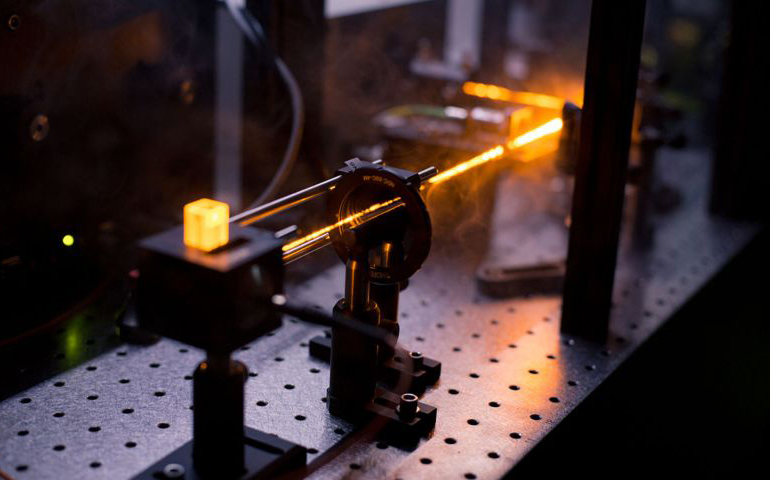Researchers at RMIT University in Australia have developed a diamond sensor that can measure magnetic fields up to 10 times more sensitively than current sensors. The breakthrough could lead to a new generation of magnetoencephalography (MEG) scanners that are small and portable, and can function at room temperature. The researchers envisage that the new scanners could even work as a helmet that a patient could place over their head, making it useful in detecting concussions at the point of care or for routine monitoring of neurodegenerative diseases. The new sensor does not lose any of the light generated by defects in the diamond in response to the magnetic field, meaning that it is highly sensitive.
MEG scanners detect the magnetic activity of neurons in the brain, and the data are visualized as brain waves. The technique is useful in identifying brain disorders and tracking brain activity. The scanners work thanks to diamond sensors, inside which quantum defects emit light in response to the measured magnetic field. However, current sensors cannot detect all the light and most is lost, leading to a loss of signal. These researchers introduced a laser into the mix, which helped to tie down this elusive light, leading to a significant boost in sensitivity.
“Our breakthrough was to make a laser from the defects,” said Andrew Greentree, a lead developer of the new technology. “By collecting all the light — instead of just a small amount of it — we can detect the magnetic field 10 times more precisely with our sensor compared with current best practice.”
The new sensor could lead to a change in MEG scanners. Current devices are bulky and expensive, and require very cool temperatures to function, relying on expensive liquid helium systems. “Current MEG machines are huge devices, with dedicated facilities, and they require magnetic shielding around them as well,” said Greentree. “We really want to have something that we can place on a patient’s head and we want them to be able to move around — and there’d be no need for expensive liquid helium to operate such a device.”

The new scanners, which the researchers hope to develop in the next few years, would be much smaller and could work at room temperature. Strikingly, they could function as a helmet that a patient can wear while they move around. The technology could be useful in assessing and monitoring a variety of conditions.
“With Alzheimer’s, you want to be able to monitor the progression of the disease and know the effect of any treatments,” said Greentree. “It’s similar with concussion, you want to be able to measure what’s happening in the brain after each knock. With this MEG technology we envisage, you might be able to pick up early-onset dementia. With epilepsy, you could find out where it’s occurring, and that would help you to better target interventions.”
Study in journal Science Advances: Magnetic-field-dependent stimulated emission from nitrogen-vacancy centers in diamond
Via: RMIT University
